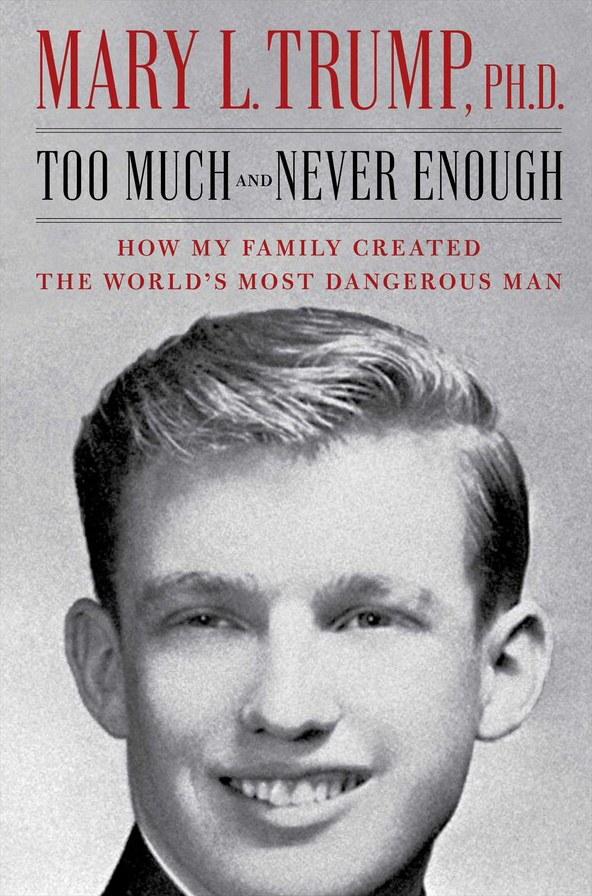
Too Much and Never Enough: How My Family Created the World's Most Dangerous Man
Book Description
Behind the gilded façade of one of America's most controversial families lies a dark and tumultuous history that shaped a man like no other. Through the lens of betrayal, manipulation, and unyielding ambition, Mary L. Trump unravels the haunting legacy of the Trump family, exposing the psychological wounds that forged a figure many deem the world's most dangerous man. With chilling revelations and a sharp critique, this gripping narrative invites readers into a labyrinth of dysfunction where power and love collide. What happens when a family’s deepest secrets fuel a rise to unprecedented power?
Quick Book Summary
“Too Much and Never Enough” by Mary L. Trump offers an insider’s look into the Trump family, drawing on psychological insight to explore the upbringing and dynamics that shaped Donald Trump. Mary, as a clinical psychologist and the niece of Donald, provides first-hand accounts of familial dysfunction, describing a household where competition, manipulation, and emotional neglect reigned. According to Mary, Fred Trump Sr.’s domineering presence and lack of empathy fostered an environment that rewarded callousness and suppressed vulnerability. Using family anecdotes and professional analysis, the book argues that Donald Trump’s behavior is the product of deep-seated wounds and learned survival mechanisms. The memoir is both personal and political, illuminating how one family’s legacy can ripple outwards to influence national and global affairs.
Summary of Key Ideas
Table of Contents
The Psychological Legacy of Fred Trump
Mary L. Trump begins her memoir by mapping out the forces that shaped the Trump family, particularly her grandfather Fred Trump Sr., whose relentless pursuit of wealth and control set the tone for the household. Fred Sr. emerges as a cold, transactional patriarch who valued aggression, loyalty to himself, and the appearance of strength above all else. In this environment, emotional needs were secondary to the demands of the business empire, and love was doled out sparingly, conditional on meeting expectations of toughness and success. Mary explains how this upbringing instilled anxiety and insecurity in the family’s children, including her father Fred Jr. and uncle Donald.
Dysfunction and Sibling Rivalry
Sibling relationships within the Trump family were fraught with expectations and competition, with each child seeking recognition and survival amidst neglect and bullying. Fred Jr., Mary’s father, was initially seen as the heir apparent but ultimately faltered under the pressure and emotional coldness of Fred Sr. His struggles with addiction, feelings of inadequacy, and eventual estrangement are central to Mary’s narrative, highlighting the cost of failure in a family obsessed with winning. In contrast, Donald developed defensive traits: grandiosity, risk-taking, and an inability to accept blame. These qualities, originally survival mechanisms, became central to his identity.
The Formation of Donald Trump's Persona
Donald Trump’s persona, as Mary describes, was forged through adaptation to a hostile family system. Donald learned to project invulnerability, deny doubt, and assert dominance – traits normalized and even celebrated by his father. Through detailed anecdotes, Mary demonstrates how Donald’s behaviors, such as never admitting mistakes and demanding loyalty, were learned in childhood years as means of coping with, and thriving in, a punitive environment. The Trump family’s inability to confront or heal their emotional wounds, Mary contends, allowed Donald’s unchecked ambitions and insecurities to solidify into leadership style.
Family Secrets and Betrayal
The memoir also delves into the family’s web of secrecy, financial maneuvering, and betrayal. Mary details instances of concealment and manipulation around inheritance, the treatment of her own branch of the family after her father’s death, and legal battles over the Trump estate. She argues that the family system was sustained by denial, legal threats, and public displays of unity that masked underlying resentments and bitterness. These patterns, Mary asserts, not only impacted the family’s internal relationships but also resonate in Donald’s approach to power and accountability.
Implications for Leadership and Power
Finally, the book assesses the broader ramifications of Donald Trump’s leadership, tracing the impact of the Trump family’s dysfunction on his public actions as president. Mary posits that the traits cultivated in Donald—lack of empathy, the drive for domination, and resistance to criticism—pose significant dangers when translated into political power. She asserts that understanding this psychological and familial context is essential to comprehending both his rise to power and the risks it presents on a national and global scale. Through personal reflection and historical context, Mary Trump’s narrative serves as both a cautionary tale and a call to scrutinize the hidden influences that shape leaders.
Download This Summary
Get a free PDF of this summary instantly — no email required.





